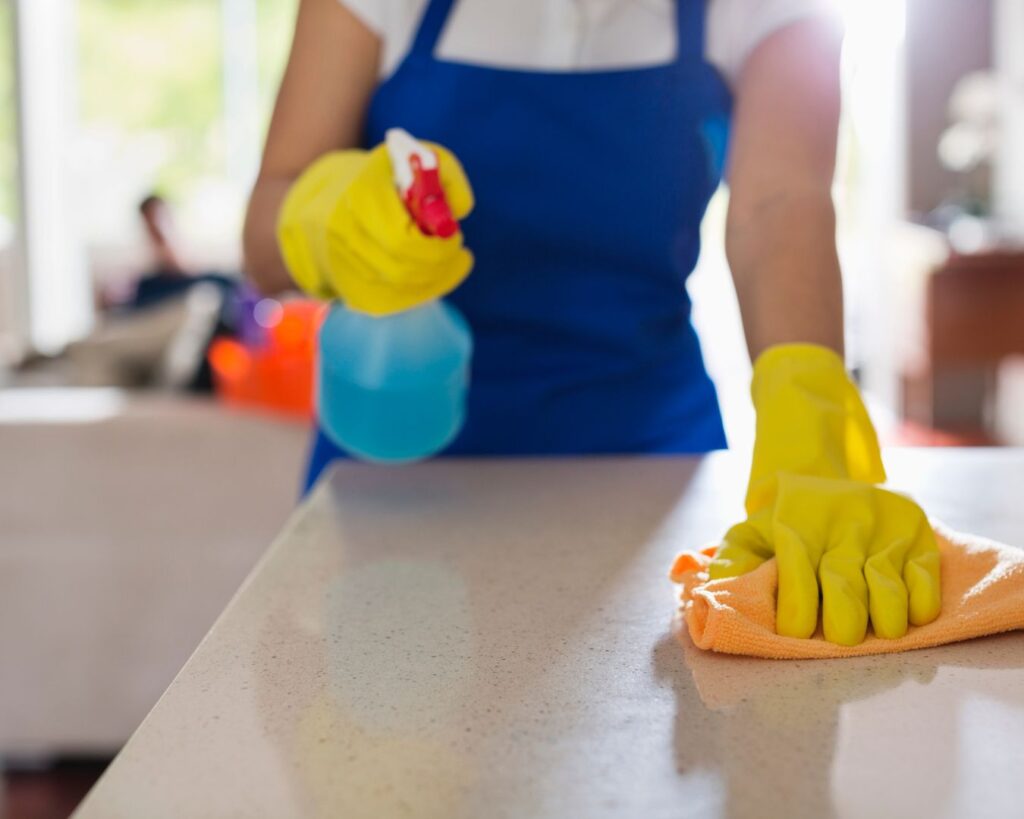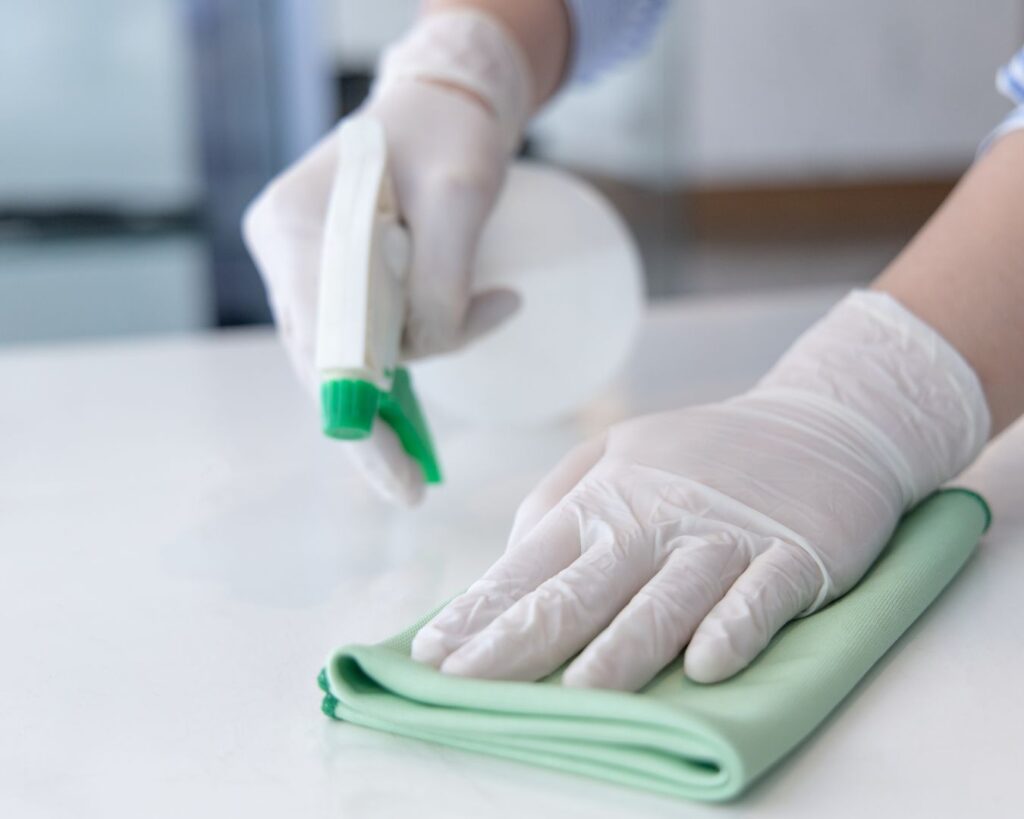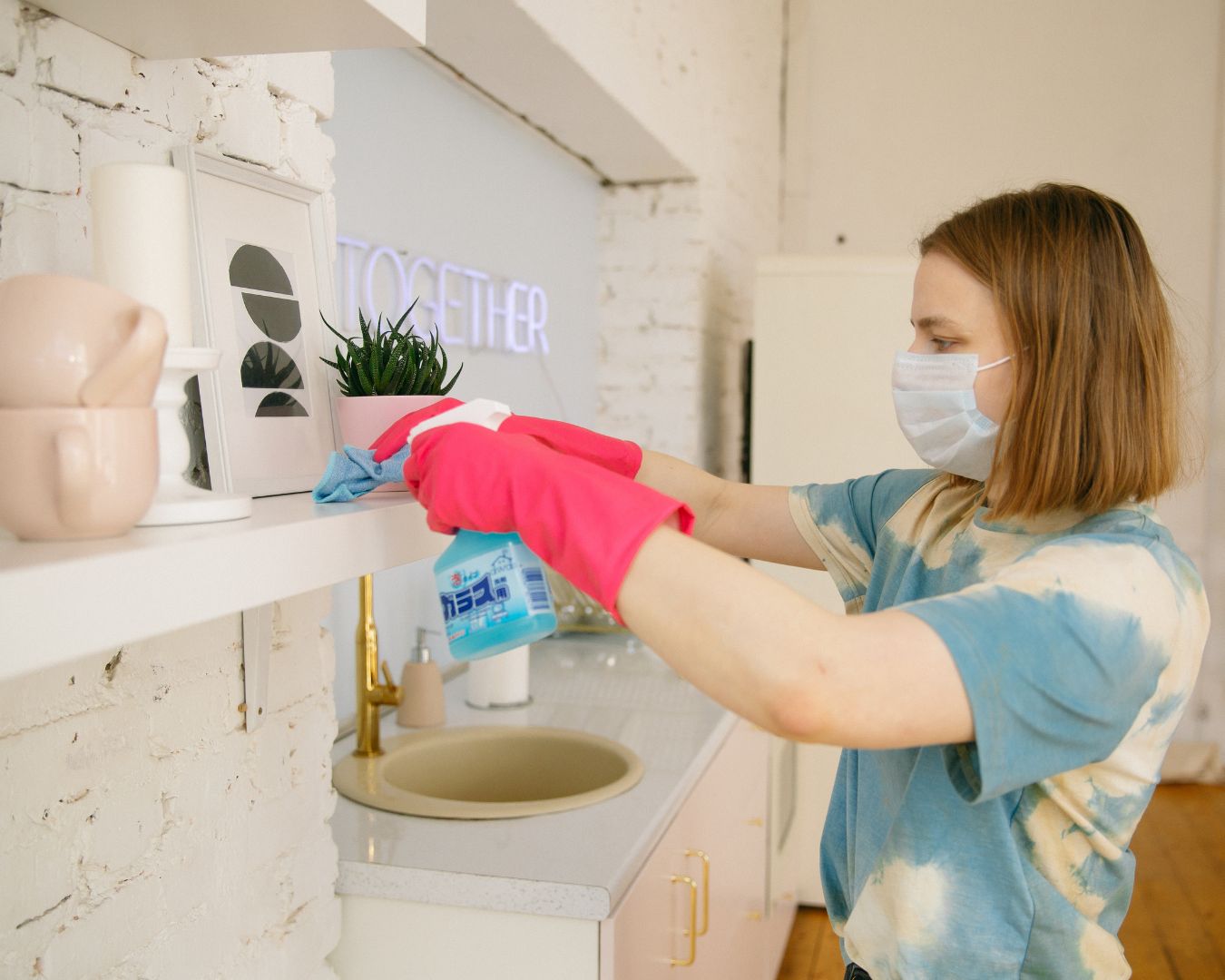Best Practices for Cleaning and Sanitizing Your Kitchen: A Comprehensive Guide
A clean kitchen is the cornerstone of a healthy home. Regular cleaning and sanitizing not only keep your kitchen looking its best but also ensure that it’s free from harmful bacteria and germs. Whether you’re cooking daily meals or preparing for special events, maintaining a hygienic kitchen is essential. In this post, we’ll explore the best practices for cleaning and sanitizing your kitchen to create a safe and pleasant cooking environment.
Develop a Cleaning Routine
Establishing a consistent cleaning routine is crucial for maintaining kitchen hygiene. Aim to clean and sanitize your kitchen daily to prevent the buildup of grime and bacteria. Break down your cleaning tasks into daily, weekly, and monthly routines to ensure comprehensive maintenance.
Daily Tasks:
- Wipe down surfaces: Use a mild cleaner or a mixture of water and vinegar to wipe countertops, stovetops, and other frequently touched surfaces.
- Clean dishes and utensils: Wash dishes, utensils, and cutting boards immediately after use to prevent cross-contamination.
- Empty trash bins: Dispose of waste and recyclables daily to avoid unpleasant odors and pests.
Weekly Tasks:
- Deep clean appliances: Wipe down the exterior and interior of appliances like the refrigerator, microwave, and oven.
- Clean floors: Sweep and mop the kitchen floor to remove crumbs and spills.
- Sanitize sponges and cloths: Replace or sanitize kitchen sponges and cleaning cloths regularly to prevent the spread of germs.
Monthly Tasks:
- Clean behind appliances: Move appliances like the refrigerator and oven to clean behind and underneath them.
- Degrease range hoods: Remove and clean range hood filters to ensure proper ventilation.
- Check for expired items: Dispose of expired food items and clean out the pantry or storage cabinets.
Focus on High-Touch Areas
High-touch areas in the kitchen are prone to contamination and require special attention. These include handles, knobs, and faucets. To effectively clean and sanitize these areas:
- Use disinfectant wipes: Wipe handles, knobs, and faucet handles with disinfectant wipes or a disinfecting spray.
- Clean with warm soapy water: For non-electrical components, use warm soapy water followed by a disinfectant.

Use the Right Cleaning Products
Choosing the right cleaning products is essential for effective sanitation. Opt for:
- Non-toxic cleaners: Choose eco-friendly and non-toxic cleaning products to minimize exposure to harmful chemicals.
- Antimicrobial agents: Use products with antimicrobial properties to kill bacteria and germs on surfaces.
- Food-safe sanitizers: For surfaces that come into contact with food, use sanitizers that are safe for food preparation areas.
Prioritize Food Safety
Proper food handling and storage are key to preventing foodborne illnesses. Follow these food safety practices:
- Separate raw and cooked foods: Use separate cutting boards and utensils for raw meats and ready-to-eat foods to prevent cross-contamination.
- Store food properly: Refrigerate perishable items promptly and store dry goods in airtight containers.
- Check food temperatures: Ensure that foods are cooked to the appropriate internal temperatures to kill harmful bacteria.

Clean Kitchen Tools and Equipment
Kitchen tools and equipment can harbor bacteria if not cleaned properly. Follow these practices:
- Dishwasher use: Clean dishes, utensils, and pots and pans in a dishwasher with a high-temperature cycle.
- Hand washing: For items that cannot go in the dishwasher, wash them thoroughly with hot soapy water.
- Sanitize cutting boards: Use a solution of water and bleach or a food-safe sanitizer to sanitize cutting boards.
Maintain a Clean Sink
The kitchen sink can be a breeding ground for bacteria. Keep it clean by:
- Rinsing and scrubbing: Rinse the sink after each use and scrub it with a brush and mild cleaner regularly.
- Disinfecting: Use a disinfectant to clean the sink and faucet to eliminate germs.
- Cleaning drains: Use a drain cleaner or a mixture of baking soda and vinegar to keep drains free from clogs and odors.
Keep Air Vents and Filters Clean
Air vents and filters help maintain air quality in the kitchen. Regular maintenance includes:
- Cleaning range hood filters: Remove and wash range hood filters to prevent grease buildup.
- Cleaning air vents: Dust and clean air vents to ensure proper ventilation and air flow.
A clean and sanitized kitchen is vital for both health and efficiency. By following these best practices, you can create a safe and enjoyable cooking environment. Develop a regular cleaning routine, focus on high-touch areas, prioritize food safety, and use appropriate cleaning products to maintain a hygienic kitchen. With consistent effort and attention to detail, you’ll ensure that your kitchen remains a clean and welcoming space for all your culinary adventures.

